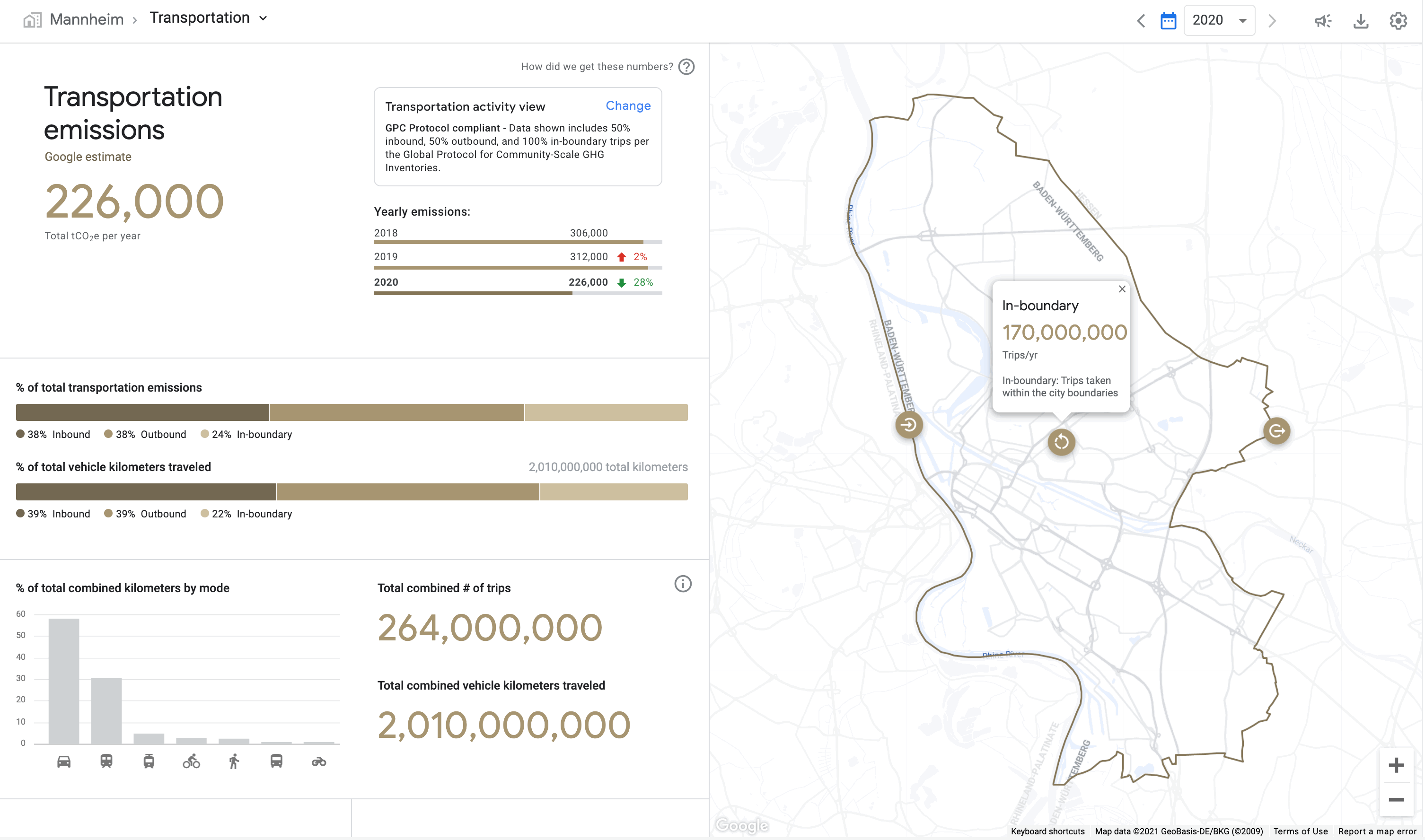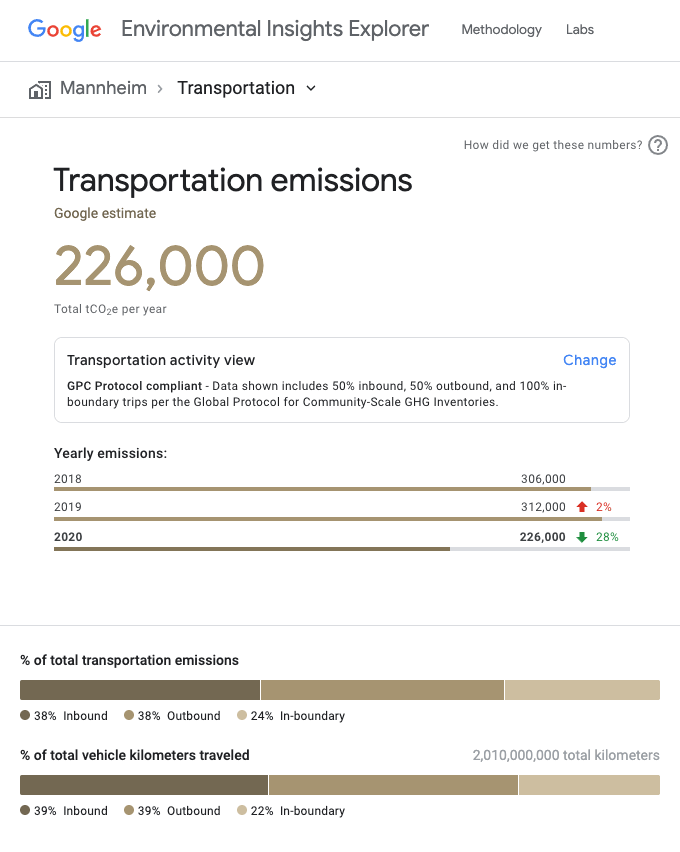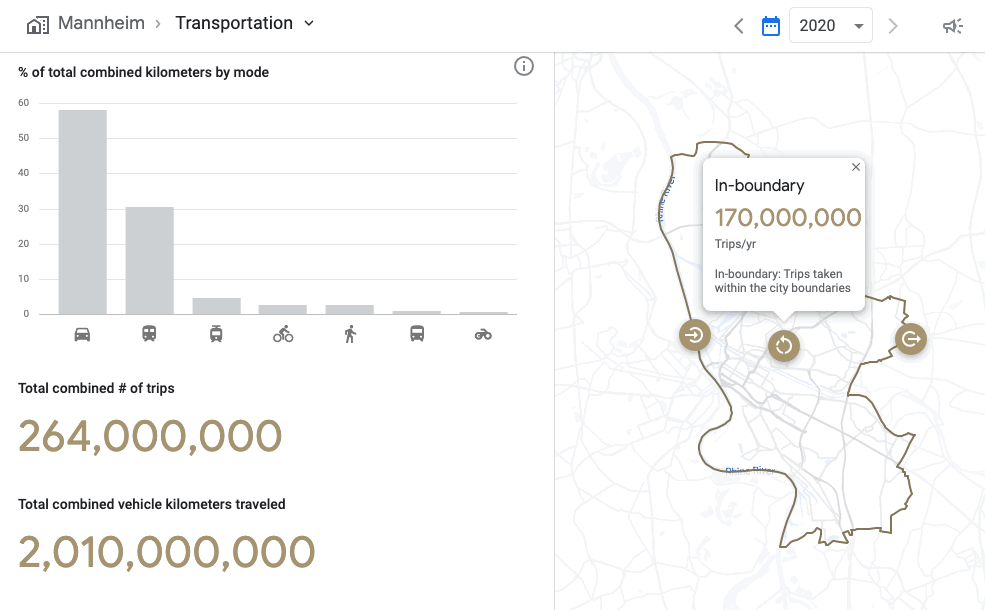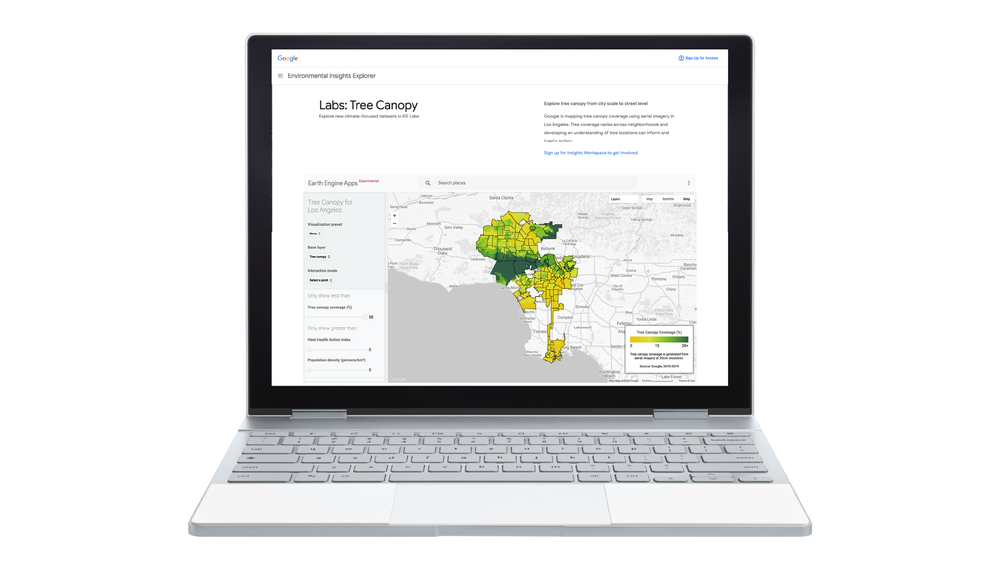City transportation is crucial to connecting residents to education, employment and essential services. At the same time, the transportation sector is where global greenhouse gas (GHG) emissions are rising the quickest.
In 2018, we launched the Environmental Insights Explorer (EIE) in collaboration with the Global Covenant of Mayors for Climate & Energy (GCoM). As part of Google's most ambitious decade of climate action, we’ve committed to helping more than 500 cities and local governments reduce an aggregate of 1 gigaton of carbon emissions per year by 2030 and beyond. With EIE, cities have free access to Google’s unique mapping data and insights so they can make sustainable decisions regarding cleaner transport policies and infrastructure programs. Since launching EIE, we’ve seen more cities and governments set ambitious climate targets. This week, 120 world governments will gather in Glasgow at COP26 to report their progress toward these commitments and set a path forward to address climate change. EIE can help cities and governments translate these targets into concrete action.
In pursuit of helping more cities take action against climate change, we will make transportation insights available in EIE for over 20,000 cities and regional governments by the end of the year, making it one of the largest ever collections of high-quality, globally consistent environmental data sources. This expansion will double the number of geographies represented in EIE, accounting for the majority of the world’s transport emissions.
As the window continues to narrow on implementing policies and plans to reduce emissions, we’re unifying around a single mission: to foster sustainability at scale. To help, we’re partnering with the C40 Cities Climate Leadership Group, a network of megacities committed to addressing climate change. Our work with C40 will help us better support the needs of cities while making data accessible to city projects that are working on climate solutions. Together we can provide higher-quality transportation activity data to measure and track GHG emissions at a global scale, while also giving state and local governments resources to better understand what’s working at a local level.
The need for action is now, and we need to rise to the challenge quickly. Google technology is unlocking our ability to generate climate-related insights and impact at a global scale. Here are a few of the latest ways we're using AI and Google Maps data in EIE.
Taking inventory of yearly progress
More cities, states and regions are committing to comprehensive climate plans to decarbonize transportation by 2040. These next two decades of ambitious action will require regular progress reports to assess what is and isn’t working.
Using AI, our systems analyze transportation trends in a city by mode, helping local governments take stock of their progress in tackling GHG emissions. GHG inventory processes traditionally take months and multiple data sources to compile, and are now streamlined, allowing government staff to reduce the cost and personnel burden of reporting.


Plan eco-friendly mobility interventions
To accelerate data-driven decisions aimed at reducing transportation emissions and boosting infrastructure investments, EIE summarizes critical insights across which modes of transport to tackle. EIE characterizes trips traveled within and across city boundaries and applies city-specific scaling factors based on overall population. EIE’s multimodal insights allow government data practitioners to ask questions that inform transportation decisions, such as the extent to which city investments in different modes of transportation can shift behaviors.

Looking forward
Modeling transportation flows is complex. With EIE, cities, states, regional policymakers, consultants can better understand the impact sustainable changes are making on global greenhouse gas emissions.
To learn more about how cities are using EIE, view our EIE 2021 City Impact report. If you’re part of a local government and interested in what EIE can do for your community, fill out this form to get in touch with our team.


